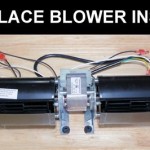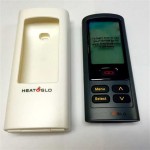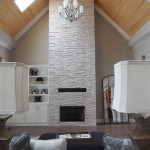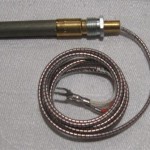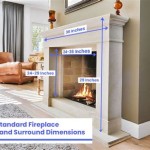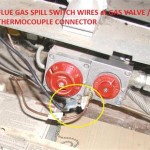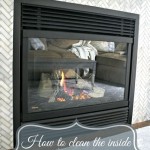What Is A Ventless Fireplace Insert?
A ventless fireplace insert, also known as a vent-free fireplace insert, represents a self-contained heating appliance designed to be installed within an existing fireplace opening or a purpose-built enclosure. Unlike traditional fireplaces that require a chimney or venting system to expel combustion byproducts, ventless inserts are engineered to operate without such external venting. This key distinction fundamentally alters their installation requirements, efficiency characteristics, and overall application.
The primary appeal of ventless fireplace inserts stems from their relative ease of installation. Eliminating the need for extensive ductwork or chimney modifications significantly reduces the installation cost and logistical complexity. This makes them an attractive option for homeowners who desire the ambiance and supplemental heat of a fireplace without incurring the substantial expenses associated with conventional vented systems. However, it is crucial to understand the operational principles and potential limitations of ventless technology to ensure safe and effective use.
Ventless fireplace inserts achieve their vent-free operation through highly efficient combustion processes. These processes are designed to minimize the production of harmful emissions such as carbon monoxide. They typically employ oxygen depletion sensors (ODS) that continuously monitor oxygen levels in the room. If oxygen levels fall below a predetermined threshold, indicating incomplete combustion and potentially dangerous carbon monoxide buildup, the ODS automatically shuts off the gas supply to the unit, effectively extinguishing the flame and preventing further emissions.
These inserts commonly utilize either natural gas or propane as their fuel source. The choice between these two fuels depends on factors such as availability, cost, and existing infrastructure. Natural gas models are typically connected to a home's existing natural gas line, while propane models require a separate propane tank. Each fuel type exhibits slightly different combustion characteristics and heating efficiencies, which should be considered when selecting a specific unit.
A typical ventless fireplace insert consists of several key components working in concert. These include the burner assembly, which is responsible for igniting and sustaining the flame; the gas valve, which regulates the flow of fuel to the burner; the oxygen depletion sensor (ODS), which continuously monitors oxygen levels; and the decorative surround, which provides an aesthetically pleasing finish and helps to radiate heat into the room. Many models also include a thermostat for maintaining a consistent room temperature and a remote control for convenient operation.
The heat output of a ventless fireplace insert is measured in British Thermal Units (BTUs). A higher BTU rating indicates a greater capacity for heating a larger space. When selecting a ventless insert, it is crucial to consider the size of the room it is intended to heat. Over-sizing the unit can lead to uncomfortable temperatures and inefficient operation, while under-sizing it may not provide adequate heating. Manufacturers typically provide guidelines on the appropriate BTU rating for different room sizes.
While ventless fireplace inserts offer convenience and ease of installation, they are not without limitations. They require careful consideration of installation guidelines, ventilation requirements (even though they are ventless), and proper maintenance to ensure safe and efficient operation. Understanding these aspects is essential for making an informed decision about whether a ventless fireplace insert is the right choice for a particular application.
Understanding Ventless Fireplace Technology
The core technology behind ventless fireplace inserts revolves around achieving near-complete combustion. This means maximizing the conversion of fuel (natural gas or propane) into heat and minimizing the production of harmful byproducts. The design of the burner assembly is critical in achieving this goal. Modern ventless burners typically feature intricate designs that promote thorough mixing of fuel and air, leading to more efficient combustion.
The ODS, or Oxygen Depletion Sensor, is a safety device integral to the operation of ventless fireplace inserts. This sensor constantly monitors the oxygen levels in the room where the unit is installed. If the oxygen level drops below a predetermined threshold, typically around 18%, the ODS shuts off the gas supply to the burner. This prevents the buildup of carbon monoxide, a colorless and odorless gas that can be lethal. The ODS is designed to be highly sensitive and reliable, providing a critical safety feature.
Another key aspect of ventless fireplace technology is the incorporation of safety shut-off mechanisms. In addition to the ODS, many models include features such as flame rollout sensors and tip-over sensors. Flame rollout sensors detect if the flame is extending beyond the intended burner area, which could indicate a malfunction or obstruction. Tip-over sensors automatically shut off the gas supply if the unit is accidentally knocked over. These redundant safety features provide an additional layer of protection.
The flame appearance in ventless fireplace inserts is often enhanced through the use of artificial logs or decorative media. These elements are designed to mimic the look of a traditional wood-burning fireplace, providing an aesthetic appeal that complements the heating function. The logs are typically made of ceramic or other heat-resistant materials and are carefully arranged to create a realistic flame pattern. Some models also incorporate features such as ember beds or glowing coals to further enhance the visual experience.
While ventless fireplaces produce significantly less carbon monoxide than vented fireplaces, they do still produce some combustion byproducts. These byproducts include water vapor, carbon dioxide, and small amounts of nitrogen dioxide. The amount of these byproducts is typically within acceptable levels as long as the unit is properly sized for the room and used in accordance with the manufacturer's instructions. Proper ventilation, even for ventless units, is crucial to maintaining air quality.
Installation and Safety Considerations
Proper installation is paramount for the safe and efficient operation of a ventless fireplace insert. It is generally recommended that installation be performed by a qualified professional who is familiar with local building codes and manufacturer's specifications. This ensures that the unit is properly connected to the gas supply, that all safety features are functioning correctly, and that the installation meets all applicable regulations.
One of the most critical installation considerations is the size of the room in which the ventless fireplace insert is installed. Manufacturers specify minimum room sizes for their units, based on the BTU output. Installing a unit in a room that is too small can lead to excessive heat buildup, oxygen depletion, and potentially dangerous levels of combustion byproducts. It is essential to carefully review the manufacturer's guidelines and ensure that the room meets the minimum size requirements.
Even though ventless fireplaces do not require external venting, proper ventilation is still essential. While they don't need a chimney, some level of fresh air exchange is required to ensure adequate oxygen levels and prevent the buildup of combustion byproducts. This can be achieved through natural ventilation, such as opening a window or door periodically, or through mechanical ventilation, such as a whole-house ventilation system. The manufacturer's instructions will typically provide guidance on appropriate ventilation practices.
Carbon monoxide detectors should be installed in any home that uses a ventless fireplace insert. These detectors provide an early warning of potentially dangerous carbon monoxide levels, allowing occupants to take corrective action before they are exposed to harmful concentrations of the gas. It is recommended to install carbon monoxide detectors on each level of the home, particularly near sleeping areas. The detectors should be tested regularly to ensure that they are functioning properly.
Regular maintenance is essential for ensuring the safe and efficient operation of a ventless fireplace insert. This includes cleaning the burner assembly, inspecting the gas connections, and verifying the proper functioning of the safety features. The manufacturer's instructions will provide specific guidance on maintenance procedures and schedules. It is crucial to follow these instructions carefully to prevent malfunctions and ensure the longevity of the unit.
Advantages and Disadvantages of Ventless Fireplace Inserts
One of the primary advantages of ventless fireplace inserts is their ease of installation. The absence of venting requirements significantly reduces the cost and complexity of installation, making them an attractive option for homeowners who want to add a fireplace without extensive renovations. This ease of installation also allows for greater flexibility in terms of placement, as the unit can be installed in almost any room that meets the minimum size requirements.
Another advantage is their high heating efficiency. Because no heat is lost through a chimney or venting system, ventless fireplace inserts can be more energy-efficient than traditional fireplaces. This can translate into lower heating bills and reduced energy consumption. The absence of a chimney also eliminates drafts and reduces heat loss from the home when the fireplace is not in use.
However, ventless fireplace inserts also have some disadvantages. One of the primary concerns is the potential for indoor air quality issues. While modern ventless units are designed to minimize emissions, they still produce some combustion byproducts, including water vapor, carbon dioxide, and small amounts of nitrogen dioxide. Proper ventilation is essential to prevent the buildup of these byproducts and maintain acceptable air quality.
Another potential disadvantage is the limitation on the size of the room in which the unit can be installed. The minimum room size requirements can restrict the placement of the fireplace in some homes. In addition, some people may find the heat produced by a ventless fireplace to be too intense, especially in smaller rooms. Careful consideration should be given to the size of the room and the BTU output of the unit before making a purchase.
Finally, the aesthetic appeal of ventless fireplace inserts may not be as authentic as that of traditional wood-burning fireplaces. While modern units often incorporate realistic-looking artificial logs and flame patterns, they may not fully replicate the ambiance and charm of a real wood fire. Homeowners who prioritize the aesthetic aspects of a fireplace may prefer a vented system, despite the additional installation costs and complexity.
:max_bytes(150000):strip_icc()/ventless-gas-fireplaces-4160746-hero-f9d4bdcd9bd446eb84406de306f790ba.jpg?strip=all)
How To Pick Out A Ventless Gas Fireplace

What Is A Ventless Gas Fireplace Experts In Gaithersbutg Md

Vent Free Inserts White Mountain Hearth

ᑕ❶ᑐ Ventless Gas Fireplace Insert Disadvantages Of Use

Considering A Ventless Gas Fireplace Here S What You Need To Know Bob Vila

Vent Free Inserts White Mountain Hearth

Choosing The Right Ventless Gas Fireplace

Ventless Fireplaces What You Need To Know

Considering A Ventless Gas Fireplace Here S What You Need To Know Bob Vila

Monessen 33 Inch Solstice Vent Free Gas Fireplace Insert Intermittent Pilot
Related Posts

